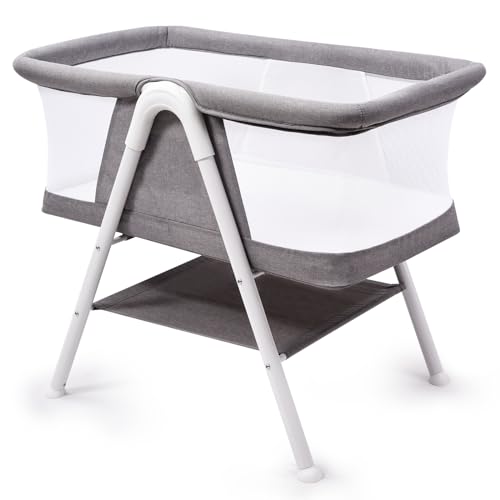Bedside Cosleeper
A bedside cosleeper is attached to your adult bed. If bedside crib or cot stick to the CSPC guidelines for sleeping spaces for infants It's safe.
These guidelines are similar to the crib bedding standards. You can learn more about these guidelines here. When choosing a bedside sleeping device, safety, comfort, and convenience are the main factors to consider.
Safety
In keeping with the American Academy of Pediatrics' recommendation that infants sleep in the same room as their parents, cosleeping (a practice also referred to as bed-sharing) has become popular with a lot of new and expecting parents. The Academy states that room-sharing with a baby is less risky than sleeping in the same bed with a parent because it reduces the chance of Sudden Unexpected Infant Death (SIDS). The AAP does not recommend bed-sharing but it does recommend that co-sleeping on an individual sleeping surface is a good way to reduce the risk of SIDS. This is why the introduction of the bedside cosleeper became so important to many families.
A bedside cosleeper is attached to a bed frame that is suitable for adults. It is a crib like sleeper. The bedside cosleeper lets parents keep an eye on their baby, and also gives them the freedom to sleep in their own bed. The most reliable cosleepers are made with high-quality materials and adhere to stringent safety standards. To ensure the safety of your child ensure that you look for the Juvenile Products Manufacturers Association stamp of approval. This proves that the product has been tested thoroughly and quality control.

The safety of a bedside sleeper depends on several factors such as the way it is set up and secured to the parent's bed. It is important that the bedside sleeper be attached to the parent's mattress in a way that eliminates gaps and spaces where an infant could become trapped. This could pose a suffocation risk. It is crucial that the attachment system used for the bedside sleeper is examined to make sure that it can withstand forces that are imposed during use, such as the parent rolling on and off the sleeper. horizontal force applied to the attachment system or corners of the bedside cosleeper.
The standard for bedside cribs incorporates, by reference, the federal consumer safety standards for bassinets (16 CFR part 1218) and specifications for the performance of closed openings. The requirements that are mandatory in the standard also address neck and head dangers of entrapment by insisting that following the application and release of a 50-lb. The standard also states that following the release and application of 50-lb. must not be created. Only read-only copies of the standard can be found at ASTM's electronic Reading Room.
Convenience
Many parents do not allow cosleeping because they fear suffocation or SIDS or because it's an "Ferberization", which forces children to sleep alone. Anthropologists have observed for a long time that many primates, mammals and people from non-Western cultures sleep often. This is because babies are soothed by hearing their mother's voice. They can also learn to self-soothe.
The best bedside sleepers come with a smart design that attaches to the side of a bed and swivels for easy access for feedings during the night or diaper changes. Look for a model with feet that can be adjusted to accommodate different mattress sizes. It should also include a large storage area for all of your baby's essentials.
Choose a bedside sleeper which can fit in with standard crib bedding to be used in a safe manner as your child grows. You may also want to consider a convertible model that could transform into a play area or a more deep bassinet for years of use. It folds easily for travel.
Portability
A bedside cosleeper that has wheels or a light base is more portable than one that has a heavy wooden frame or base. The babybay bedside sleeper HALO bassiNest essencetia and Snoo Smart Sleeper are all portable. They have adjustable feet that can be retracted to accommodate platforms and legs that fold inward to allow maximum proximity to the mattress; and 100 mesh sidewalls that allow airflow without covering baby's mouth or nose.
The Arm's Reach ClearVue is a top option. It adjusts in 1" increments and can be used as a bassinet or portable bed. It also pivots to give you easy access to your baby so that you can comfort her, nurse her or check on them at night.
